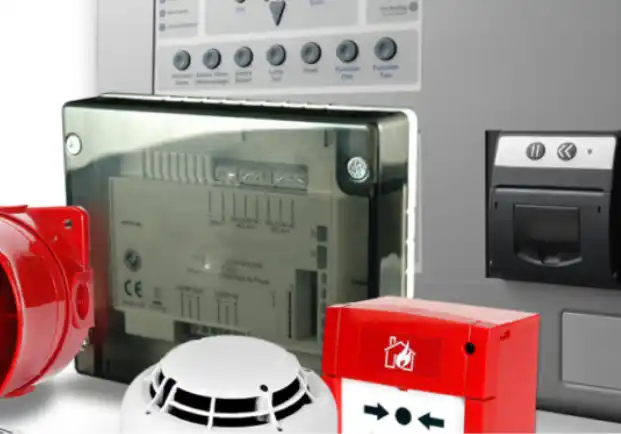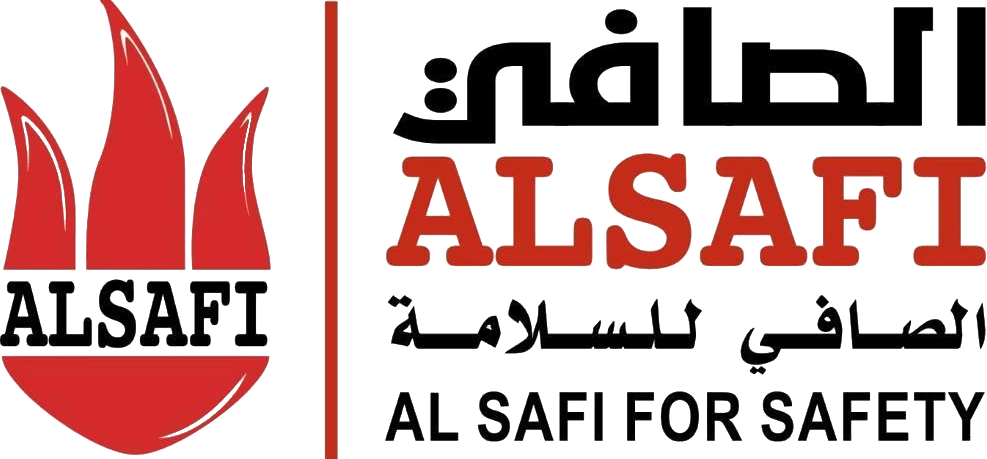Approved fire protection system drawings

Fire system plans are among the most important safety elements within any facility; as they play a vital role in protecting both human and material resources from potential risks. However, building an appropriate fire system requires careful study, starting from drafting the engineering plan up to choosing the proper systems for installation and execution.
In this article, we will explain the importance of these plans, how they are designed, and the key components of a fire system.
What Are the Main Components of a Fire System?
Below are the main components of a fire system:
- Fire Detectors: Used to detect and monitor the presence of fire. They include sensors and devices capable of identifying fire outbreaks.
- Control Panel: The central hub of the fire suppression system. It functions as the source of monitoring and control, receiving signals from different types of fire detectors, triggering alerts, and initiating the appropriate suppression actions.
- Piping Network: Used to transport and distribute the extinguishing agent—be it foam, gas, or water—from the suppression unit to potential fire areas.
- Suppression Unit: Consists of equipment and devices used to extinguish the fire. This unit may contain gas, foam, water, or any other extinguishing medium, depending on the system in place.
- Spray Nozzles: Used to discharge extinguishing agents such as foam or water during a fire. They are strategically placed in fire-prone or sensitive areas to ensure effective suppression when activated.
You can contact us at Al-Safi Company for more information about fire systems.
What Are Fire System Plans?
Fire system plans are schematic diagrams that show how fire protection systems are installed and distributed inside a facility. This includes alarm systems, ventilation, and firefighting equipment. These plans include all structural and technical details, specifying the locations of fire devices such as extinguishers, sprinklers, and both visual and audible alarms.
Such plans serve as essential documents that must be submitted to authorities such as Civil Defense for approval before starting construction or actual operation.
Why Are Fire System Plans Important?
Fire system plans are a key tool for designing and implementing safety systems. Here are some reasons why they are highly important:
-
Enhanced Protection:
The main purpose of fire system plans is to protect lives and property. By ensuring the strategic distribution of safety systems, they enable fast and effective response in emergencies. In case of fire, there is no time to think; systems must be ready to act immediately.
-
Regulatory Compliance:
Authorities in the Kingdom, such as municipalities and Civil Defense, require fire system plans as part of licensing applications. These plans ensure compliance with both local and international safety standards.
-
Facilitates Licensing:
Obtaining approval from authorities requires a certified fire system plan. This accelerates the process of obtaining a Civil Defense permit or other necessary licenses for operating the facility, especially for large-scale projects requiring multiple approvals.
-
Contribution to Public Safety:
Fire system plans also define emergency exits, entry points, and the optimal locations for firefighting devices such as alarms and monitoring equipment. This ensures easy access to fire sites in emergencies while supporting occupant safety inside the building.
How Are Fire System Plans Designed?
These plans are not designed randomly but based on precise engineering standards. Several factors are considered to ensure efficiency in handling fires. Key steps include:
-
Identifying System Requirements:
Before designing, the engineer must define the type of system to be used. Will it be fully automatic or require manual intervention? They also need to determine the expected number of occupants and the nature of activities within the facility.
-
Risk Analysis:
After defining the requirements, a full fire risk assessment is carried out. This identifies high-risk areas such as electrical rooms, kitchens, and storage areas that are more prone to fires.
-
Distribution of Safety Systems:
Based on risk analysis, the optimal locations for installing fire systems are determined, including automatic suppression systems, sprinklers, and alarms. Emergency exits and entry points are also specified to ensure safe evacuation if needed.
-
Documentation & Approval:
Once completed, plans are drawn clearly and submitted to authorities such as Civil Defense for approval. This ensures compliance with regulations and safety codes.
Role of Certified Engineering Offices
In Saudi Arabia, it is essential to work with an engineering office certified by government authorities to design fire systems. Such offices have the required technical expertise and employ engineers certified by Civil Defense to prepare and implement plans correctly.
Key Elements in Fire System Plans
The essential elements of fire system plans include:
- Early Warning Systems: Visual and audible alarms that alert occupants to fire hazards and direct them to evacuation routes.
- Suppression Systems: Automatic fire suppression systems such as sprinklers and water pipes, designed to extinguish fires before they spread.
- Emergency Exits: Plans highlight exit and entry points to ensure quick and safe evacuation.
- Ventilation Systems: Help prevent smoke spread in buildings, ensuring safer conditions during fires.
- Personal Protective Equipment: Includes breathing apparatus and smoke masks, enabling safe evacuation for occupants.
In conclusion, fire system plans are a fundamental part of designing any residential or commercial project, ensuring the protection of lives and property during emergencies. By working with a company like Al-Safi, you ensure compliance with both local and international regulations, achieving the highest safety and security standards.
Frequently Asked Questions
Is it necessary to submit a fire system plan before construction?
Yes, in most cases a fire system plan must be submitted before starting construction to obtain approval from the relevant authorities.
Can the plan be modified after approval?
Yes, modifications can be made when necessary, but any changes must be submitted to the authorities for re-approval.
What is the validity period of fire system plans?
The validity of a fire system plan usually depends on the project itself, but it must be updated if the building usage changes or modifications are made to its design.



